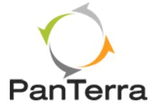Description

VHT Callback

XenCALL
Comprehensive Overview: VHT Callback vs XenCALL
Certainly! Let's delve into an overview of VHT Callback and XenCALL, covering the points you've requested:
VHT Callback
a) Primary Functions and Target Markets:
VHT Callback, developed by Virtual Hold Technology, focuses on enhancing customer service experiences by offering virtual hold and callback solutions. Its core function is to reduce the time customers spend waiting on hold by allowing them to opt for a callback instead. This technology is often integrated into call centers, enhancing customer satisfaction and operational efficiency.
-
Primary Functions:
- Callback management: Allows customers to request a callback rather than wait on hold.
- Multi-channel integration: Integrates with voice, SMS, web, and mobile applications.
- Queue management: Adjusts virtual queues based on current call center loads to optimize workforce management.
-
Target Markets:
- Large enterprises with high-volume customer service operations.
- Industries such as telecommunications, banking, retail, and utilities.
b) Market Share and User Base:
VHT Callback primarily serves large enterprises in industries where customer interaction and satisfaction are crucial. Its market presence is notable among organizations that prioritize innovative customer service technologies. However, it may not dominate the market overall, as callback solutions are part of a broader contact center technology landscape where multiple vendors and solutions coexist.
c) Key Differentiating Factors:
VHT Callback stands out due to its focus on reducing hold times and enhancing the customer experience. Its differentiators include:
- Proven track record in large-scale implementations.
- Specialized in callback technology with advanced queuing algorithms.
- Strong integration capabilities with existing call center technologies and various communication channels.
XenCALL
a) Primary Functions and Target Markets:
XenCALL is a cloud-based contact center software solution that provides a comprehensive suite of tools for outbound sales and customer relationship management (CRM). Its main objective is to optimize outbound calling efforts and sales automation.
-
Primary Functions:
- Predictive dialing: Automates the dialing process to enhance agent productivity.
- CRM integration: Allows for seamless management of customer interactions and data.
- Analytics & reporting: Offers detailed insights into call center performance and sales metrics.
-
Target Markets:
- Small to medium-sized businesses (SMBs) focused on outbound sales and telemarketing.
- Industries including real estate, insurance, and any sector heavily reliant on cold calling or sales outreach.
b) Market Share and User Base:
XenCALL caters predominantly to SMBs with an emphasis on improving sales productivity through automation. Its market presence is more niche, focusing on a specific set of users who require dynamic sales and lead management solutions.
c) Key Differentiating Factors:
- Emphasis on outbound sales automation and predictive dialing.
- Comprehensive features for SMBs, providing an all-in-one platform that includes CRM and telephony.
- Cost-effective solution for businesses seeking to enhance sales efficiency without the need for extensive IT resources.
Comparative Summary
While VHT Callback and XenCALL both serve the broader contact center space, they focus on different aspects and cater to distinct markets. VHT Callback is tailored towards optimizing inbound customer service operations in large enterprises, while XenCALL excels in enhancing outbound sales processes for SMBs. The primary differentiators lie in the scale of their target users, specific functionalities, and the unique problems they aim to solve in customer interactions or sales productivity.
Understanding these differences is crucial for businesses when selecting the right tool based on their operational needs – whether it's improving customer service efficiency or maximizing outbound sales effectiveness.
Contact Info

Year founded :
Not Available
Not Available
Not Available
Not Available
Not Available

Year founded :
2014
+1 800-694-1049
Not Available
Canada
Not Available
Feature Similarity Breakdown: VHT Callback, XenCALL
As of my last update, VHT Callback and XenCALL are both systems designed to optimize call center operations, but they focus on slightly different aspects of this function. Below is a feature similarity breakdown:
a) Core Features in Common
-
Call Management:
- Both platforms offer advanced call management features such as call routing, queue management, and call recording.
-
Customer Engagement:
- They allow businesses to efficiently manage interactions with customers and improve customer experience through tools designed to reduce wait times and handle calls more effectively.
-
Integration Capabilities:
- Both solutions can integrate with other CRM platforms and third-party applications to provide a seamless experience across different business tools.
-
Analytics and Reporting:
- VHT Callback and XenCALL provide detailed analytics and reporting tools to help businesses monitor call performance, agent efficiency, and overall customer satisfaction.
-
Scalability:
- Each platform is designed to accommodate businesses of varying sizes, offering scalability to grow with the company's needs.
b) User Interface Comparison
-
VHT Callback:
- Typically designed with a focus on simplicity and ease of use, VHT Callback's interface might be streamlined to offer quick access to callback-related features. It's often user-friendly and intuitive, aimed at reducing the learning curve for new users.
-
XenCALL:
- Known for its rich interface with more comprehensive features at the forefront, XenCALL often presents a more detailed dashboard. This platform might afford users more control over call center operations with customizable options, though it can sometimes result in a steeper learning curve for new users.
c) Unique Features
-
VHT Callback:
- Callback Feature: VHT Callback is particularly known for its virtual hold technology, which allows customers to receive a callback instead of waiting on hold, thus enhancing customer satisfaction and reducing churn.
- Customer Wait Time Management: Offers specific features to manage customer expectations when wait times are long, such as notifying them about the estimated wait time and position in the queue.
-
XenCALL:
- Integrated Dialer System: XenCALL is recognized for its robust dialer capabilities, which include predictive, preview, and power dialing options designed to increase agent efficiency.
- CRM Built-in Capabilities: XenCALL often comes with integrated CRM functionality, allowing for seamless management of customer information and interactions within the same platform.
These differences indicate that while VHT Callback might be better suited for companies focused on reducing hold times and improving customer service during high call volumes, XenCALL could be more attractive for businesses looking for integrated CRM capabilities and advanced dialing features. The choice between the two would largely depend on the specific needs and priorities of the call center operation in question.
Features

Efficient Call Management
Customer Experience Enhancement
Insights and Analytics
Integration and Flexibility

Call Management
Contact Management
Analytics and Reporting
Integrations
Best Fit Use Cases: VHT Callback, XenCALL
VHT Callback and XenCALL are solutions designed to enhance customer experience and optimize contact center operations through different functionalities. They cater to various types of businesses and projects but have distinct use cases based on their features.
VHT Callback
a) Types of Businesses or Projects:
- Customer-Centric Organizations: Any business that prioritizes customer satisfaction and aims to reduce wait times can benefit from VHT Callback. This would include retail, e-commerce, telecommunications, and utility companies that frequently deal with high call volumes.
- Companies with High Call Volumes: Businesses that experience peak call times, such as airlines or ticketing services, can use VHT Callback to manage queues more effectively.
- Healthcare: Medical service providers or hospitals that need to manage appointment scheduling and patient inquiries without overwhelming their staff.
Scenarios:
- Reducing Wait Times: VHT Callback is optimal when the goal is to minimize customer wait times and improve first-call resolution rates. It allows customers to receive a call back rather than waiting on hold, effectively managing call peaks.
- Improving Customer Satisfaction: When a business aims to enhance the overall customer experience by offering flexibility and reducing effort on the customer's part.
XenCALL
b) Preferred Scenarios:
- Outbound Sales and Marketing: Businesses that need robust outbound sales solutions can use XenCALL for its predictive dialer capabilities. This is particularly useful for telemarketing, lead generation, and customer outreach campaigns.
- Comprehensive CRM Integration: If a business requires a contact center solution that integrates seamlessly with existing CRM systems to enhance customer data handling and relationship management.
- Remote Workforces: Organizations with distributed or remote sales teams can leverage XenCALL’s cloud-based capabilities for efficient operations from anywhere.
d) Catering to Industry Verticals or Company Sizes:
VHT Callback:
- Industry Verticals: It is versatile across multiple sectors like retail, utilities, financial services, healthcare, and travel. These industries often face voluminous customer interaction demands that benefit from effective callback solutions.
- Company Sizes: Suitable for medium to large enterprises that have established contact centers with significant customer interaction rates.
XenCALL:
- Industry Verticals: Primarily targets industries focused on sales, such as real estate, telemarketing, and financial services, where outbound calling and lead management are critical.
- Company Sizes: Flexible for small to medium enterprises, especially those looking to enhance outbound sales processes with limited resources. Scalability options also cater to larger companies needing comprehensive outbound calling solutions.
Both VHT Callback and XenCALL provide specialized functionalities that support different business needs, offering scalability and integration capabilities tailored to enhance customer interaction and operational efficiency across industry verticals and company sizes.
Pricing

Pricing Not Available

Pricing Not Available
Metrics History
Metrics History
Comparing undefined across companies
Conclusion & Final Verdict: VHT Callback vs XenCALL
To determine the best overall value between VHT Callback and XenCALL, let's examine each product's strengths and weaknesses, along with specific recommendations for users considering these options.
Summary Conclusion:
a) Best Overall Value:
Given the distinct functionalities and target markets of VHT Callback and XenCALL, the best overall value largely depends on the specific needs of a business. However, if we consider broad applicability and cost-efficiency, a general assessment could be:
-
VHT Callback is ideal for businesses heavily focused on enhancing customer experience and reducing customer wait times in high-volume call centers. It ensures that customers can receive a callback rather than waiting on hold, which can improve customer satisfaction significantly.
-
XenCALL, on the other hand, serves as a comprehensive CRM and auto-dialer solution, making it exceptionally valuable for sales-oriented organizations seeking robust contact management and efficiency in outreach campaigns.
b) Pros and Cons:
VHT Callback:
-
Pros:
- Increases customer satisfaction by minimizing hold times.
- Reduces call abandonment rates.
- Enhances agent efficiency by scheduling calls at optimal times.
- Seamless integration with existing call center systems.
-
Cons:
- Primarily benefits environments with high incoming call volumes.
- May not offer as much value for sales-focused organizations.
- Can be an additional expense without adding features like CRM functionalities.
XenCALL:
-
Pros:
- All-in-one platform with CRM, auto-dialing, and analytics.
- Increases outbound call efficiency and agent productivity.
- Suitable for sales teams needing comprehensive contact management.
- Scalable for various sizes of sales operations.
-
Cons:
- Primarily outbound-oriented, lacking in specific inbound solutions like callback scheduling.
- Complexity can be overwhelming for small teams or non-sales focused operations.
- Initial setup and training may require significant time investment.
c) Specific Recommendations:
For users trying to decide between VHT Callback and XenCALL, consider the following recommendations:
-
Identify Core Needs:
- If your primary goal is to manage high volumes of incoming calls and ensure superior customer service by offering callbacks, VHT Callback would be more suitable.
- If your main objective is to enhance sales productivity through an integrated CRM and outbound dialing system, XenCALL is the preferred choice.
-
Evaluate Integration Requirements:
- Consider how well each solution integrates with existing systems. VHT Callback typically integrates seamlessly with call center platforms, while XenCALL may require custom setup depending on your CRM infrastructure.
-
Budget Considerations:
- Determine your budget and evaluate which solution provides the required features within your financial constraints. If cost is a critical factor, ensure the pricing aligns with your expected ROI.
-
Trial and Feedback:
- Whenever possible, take advantage of free trials or demos to experience each system's interface and capabilities firsthand. Gathering feedback from teams who will use the system is also vital in making an informed decision.
In conclusion, the choice between VHT Callback and XenCALL should be guided by your organization’s specific use case scenarios and strategic goals. Both offer considerable value within their respective domains, and selecting the right one hinges on aligning the solution’s capabilities with your operational needs.



